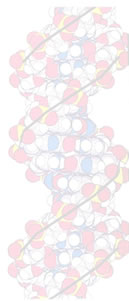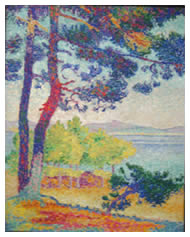 |
||||||||||
Date: December 17, 2026
Updated: March 30, 2026
by Greg
Related Articles:
Stem Cell Transplants
Prognostic Indicators
Therapy Choices

Editor's Note: The following case is based on notes from an an anonymous patient who would like other readers to keep in mind that the end of remission in the face of poor prognostic factors can be a very dangerous time. Delaying the decision to seek a mini-allo, the only known cure at this point for poor prognostic disease, can result in that choice being removed suddenly. The names of all the players in this cautionary tale have been disguised.
Greg was diagnosed in October 2026 at the age of 43, a relatively healthy but overweight male. He became aware of a couple of persistent lymph nodes but chose to ignore them for six months. He decided to see a doctor after a series of bronchial infections and the discovery of several other palpable swollen nodes on his neck and skull. His "gatekeeper" doctor ordered a CBC and discovered that his WBC was over 70K. Greg's GP referred him to a community hematologist, Dr. Chapman.
Dr. Chapman turned out to be a remarkably lucky choice. She accepted Greg's Internet research and active involvement in choosing treatment plans. Unfortunately, 2026 was a little too early for widespread knowledge of prognostic factors; the only prognostic information gathered from flow cytometry was Greg's CD38 expression (more than 75% of Greg's CLL cells were CD38+). A CT scan revealed extensive adenopathy and splenomegly. Greg's WBC continued to rise during the weeks of staging and second opinion (from Dr. Prince, a lymphoma researcher at Western U Cancer Research Center).
Dr. Chapman's plan was to treat with conventional therapy (fludarabine), achieve a remission, then harvest and store stem cells for a future auto transplant. This was not an unusual strategy, and GrannyBarb's long survival post-auto was reassuring.
 Two rounds of single agent Fludara (fludarabine) produced a partial response (normal ALC,
somewhat reduced nodes). Dr. Chapman decided to add Cytoxan (cyclophosphamide) to increase
the depth of the response. Greg started to read about the RFC treatment protocol and its
dramatic responses. He lobbied Dr. Chapman to include Rituxan (rituximab) in his treatment regime,
despite her reluctance due to several experiences with dramatic
infusion reactions.
Two rounds of single agent Fludara (fludarabine) produced a partial response (normal ALC,
somewhat reduced nodes). Dr. Chapman decided to add Cytoxan (cyclophosphamide) to increase
the depth of the response. Greg started to read about the RFC treatment protocol and its
dramatic responses. He lobbied Dr. Chapman to include Rituxan (rituximab) in his treatment regime,
despite her reluctance due to several experiences with dramatic
infusion reactions.
Starting with round four, Greg received RFC, and tolerated it well. At this point he noticed that chemo wasn't causing him to lose weight and joined a rational, support-group based weight loss program and started eating well and exercising (walking, stationary cycling). This turned out well, eliminating an average of 1.5 lbs a week for many many weeks. Greg eventually lost a total of 87 lbs.
After round six (the third one with all the components of the RFC protocol), Greg met Dr. Prince to discuss what to do next. By this time, it was generally acknowledged that auto transplants were ineffective against CLL, but he still agreed with the stem cell harvest plan, keeping auto as a "hail Mary" option should Greg relapse and turn out to be refractory to available treatments.
Dr. Chapman restaged Greg with CT scan and flow cytometry; there were no detectable abnormal nodes or spleen enlargement but he still had a 1% population of CLL cells. Dr. Prince advised against collecting stem cells with that degree of remaining disease, so Dr. Chapman opted to do two more rounds of RFC, after which flow cytometry was clear, LDH 111, B2M 1478, all within normal ranges.
Dr. Chapman followed up a month later with a bone marrow aspirate; by this time Greg had discovered FISH testing and requested that test on the BMA, but the lab ended up wasting too much of the sample. Flow cytometry was clear, so Greg returned to Dr. Prince to prepare for stem cell harvesting. It took a month to make the case to Greg's insurance company and for the insurance company to deny the claim ("auto transplants are experimental for CLL") so Greg elected to self-pay. Dr. Prince proposed mobilizing Greg's stem cells with a large dose of Cytoxan and frequent Neupogen shots; this process took several weeks longer than expected due to Greg's weakened bone marrow. But in the end, they collected sufficient stem cells. This action would have a profound effect of Greg's range of options at a later date.
Exactly a year after diagnosis, Greg was declared done with treatment, in complete remission. A PCR test on peripheral blood was negative but with the caveat that since no PCR test was done on when Greg had circulating cells, there was no guarantee that the PCR test was looking for the right thing.
In hindsight several mistakes were made:
Greg continued to exercise and lose weight and enjoy improved health, and the time between visits to Dr. Chapman increased to every two months. The following year he embarked on a series of bike rides in the Washington and Oregon cascades, working up to a 100 mile ride in Oregon, and revisiting a bike ride he'd done ten years before: bicycling up the 10,000 foot Haleakala volcano on Maui.
Somewhere along the way, Greg stopped taking his prophylactic acyclovir pills, and was rewarded in fall 2026 with an unpleasant case of shingles.
In the Spring of the following year, 2 1/2 years after diagnosis (just when Dr. Chapman was planning to move to every six month checkups), flow cytometry found a return of a small population of CLL cells. For the next year, the numbers fluctuated, never exceeding 3%. Then the numbers began to increase steadily, and Greg started to suffer from visible node enlargement and a series of persistent respiratory infections. FISH testing revealed deletions of 13q13.4 in 48% of the cells as well as the dreaded 17p13.1 (p53 gene) in 20% of the cells.
Greg resumed treatment under Dr. Chapman, first with fludarabine, with a partial response, then consulted with Dr. Prince to discuss transplants. The conversation was somewhat maddening, with Dr. Prince stating he wasn't saying a transplant was "mandatory". When he was asked about the lack of alternatives for p53-deleted people and the risk of running out of "bullets", he replied that, yes, it would be better to seek the transplant before becoming refractory to all treatments, especially given the long setup (4 months) for a mini-allo.
Greg and Dr. Chapman decided to proceed with RFC and were rewarded with an extremely rapidly growing bundle of nodes in Greg's left armpit. A biopsy showed no transformation to large cell lymphoma. Flow cytometry showed the nodes were full of CLL cells. Since Greg had discomfort from these nodes (and no other nodes were experiencing the same degree of rapid growth) Dr. Chapman elected to use external radiation on the armpit but was cautioned by Dr. Prince to keep the radiation exposure to half of what was planned by the radiation oncologist, because a transplant would require additional total body irradiation.
Greg tolerated the radiation well and continued RFC treatment; the combination reduced the armpit nodes, while other nodes continued to grow. Greg met with Dr. Prince, whose earlier reserve had disappeared."The disease has turned a corner, and the only way to have a chance for long term survival would be a mini-allo transplant". Since Greg had extensive non-responsive adenopathy, Dr. Prince proposed a tandem transplant, using an auto transplant to "debulk" Greg, then follow up with a mini allo.
At this point Greg sought opinions from CLL experts, exchanging emails with Dr. Walker at Mega Cancer Center at Global U who replied "there are other ways to debulk you" — but Dr. Walker was too difficult to schedule on short notice. Dr. Kirsch at Calabash U Cancer Center was available in just a couple of weeks, so Greg saw him.
 Dr. Kirsch offered several p53-deleted treatment options, in order of
experience: HDMP+R, flavopiridol, a gene therapy trial, and
various other combinations entering clinical trials. Dr. Kirsch did a
bone marrow biopsy and aspirate, which revealed, in addition to the
population of CLL cells, another abnormal population which later
appeared to be prolymphocytes.
Dr. Kirsch offered several p53-deleted treatment options, in order of
experience: HDMP+R, flavopiridol, a gene therapy trial, and
various other combinations entering clinical trials. Dr. Kirsch did a
bone marrow biopsy and aspirate, which revealed, in addition to the
population of CLL cells, another abnormal population which later
appeared to be prolymphocytes.
Greg discussed HDMP+R with Dr. Chapman, who was initially reluctant to try it, but agreed that it was relatively low-risk treatment that Greg could discontinue at any time and return to the tandem option. Greg's initial response to HDMP+R was good, with reduced lymph nodes. He experienced high fevers of unknown origin during the first two cycles, requiring hospitalization. CT scans taken after the first and second round revealed that the disease resumed growth during the second round, but at a relatively slow pace. Greg returned to consult with Dr. Kirsch who suggested Campath, but observed that Campath is only rarely effective against bulky disease. Greg and Dr. Chapman decided it was worth a try.
Campath gave Greg significant hives, which were controlled with Zyrtec and large doses of Benadryl. During the second week, Greg's adenopathy accelerated dramatically, and by the third week Dr. Chapman declared this treatment a failure, and advised returning to Dr. Prince for the transplant option.
Greg sought one more suggestion from Dr. Kirsch, and was offered the Humax-CD20 trial, which required a four-week treatment free period before evaluation. This quickly proved impossible; after three weeks of rapid node growth, Dr. Chapman administered a high dose of Cytoxan, which knocked the nodes back several weeks, but growth resumed at the same high rate.
Greg finally acknowledged that the time for the tandem transplant had arrived, but Dr. Prince's transplant group was shocked at his extensive adenopathy and immediately admitted him for treatment with DHAP+Rituxan, which Greg tolerated relatively well, with some residual kidney damage and hearing loss. The effect on the nodes was dramatic, returning the visible nodes to months-ago levels, but the growth resumed unabated, and within three weeks were back to the extreme levels.
Greg was admitted a few days ago for high dose Cytoxan + total body irradiation as conditioning for an auto transplant, with a mini-allo scheduled for six weeks later. There is no guarantee that the disease won't resume growth after the auto, making the mini-allo impossible.
What has Greg learned?

Editor's Note:
It was indeed fortunate for Greg that he had had his stem cells collected and available for an auto transplant, a rare asset for CLL patients. Had that not been the case, his choices would have been bleak indeed.
Please join us in wishing Greg great success in his treatment.
Update No. 1 – December 17, 2026.
I'm at day+10 in my auto transplant, which has gone surprisingly well. The nodes are continuing to shrink, and today they actually counted 10 neutrophils. I'm to be discharged tomorrow which is very welcome news. I have had very little mucositis and was able to eat and drink through the entire process, which is much better than average. I return to the transplant clinic on Monday to find out how soon I'll be restaged for the mini-allo.
Update No. 2 – January 13, 2026.
I'm at day+38 and still steadily improving. This past Monday I had a bone marrow biopsy and aspiration; as of Friday I had results from the flow cytometry on the marrow, which reported a small CLL cell population (0.85% of the white cell). The transplant staff basically shrugged their shoulders when I asked how that could be, suggesting that the harvested stem cells may have included some CLL cells — not likely, since the flow cytometry done on both a BMB and peripheral blood taken immediately prior to the 2026 stem cell harvest, were clear and PCR-negative (with caveats).
When I got back home one theory hit me — Dr. Kirsch had argued that the auto transplant conditioning was suspect for my case because of my p53 deleted population which would be resistant to radiation and high dose cytoxan. Perhaps that 0.85% population is the nastiest p53-deleted stuff I have — CLL cells that evaded the auto conditioning. I guess when we get the FISH analysis next week, if it comes back with 100% p53 deletion, it would support the theory.
This Thursday I'll graduate from the auto team and report to the allo team, currently planning on the stem cell infusion on 2/1. The conditioning regimen will be two days of fludarabine (lower doses than I've received as treatment previously), one day of rest, then one session of total body irradiation.
Update No. 3 – March 30, 2026.
Well my dithering over whether I should skip the mini and see what the auto did for me ended pretty quickly. A PET scan showed considerable metabolic activity in the nodes. We had to delay the mini transplant by two weeks because I caught rhinovirus. During those two weeks my nodes started growing quickly again, which was quite frightening.
I received my donor's stem cells early in the morning of Feb 16, after three days of fludarabine and one session of TBI. A week later, my nodes were gone. Not shrunken, gone. I have a neck and chin I haven't seen in 18 months. Apparently whatever CLL I had left after the auto was very susceptible to fludarabine and TBI.
A couple of weeks ago I started having skin GVHD, which of course is good news if we're hoping for GVL, so I'm on a long series of prednisone, and am now insulin dependent.
Last week I had a series of tests (BMB, CT scan) with these results:
So at Day+40 I'm down to only one clinic visit per week. On the other hand, it's not been an entirely easy road. I've got two cold viruses (which aren't affecting me much but put me in isolation whenever I'm at the clinic or hospital).
I've been hospitalized and catheterized twice for bladder blockage from blood clots from hemorrhagic cystitis caused by the BK virus that was reactivated by the auto transplant.
Update No. 4 – August 23, 2026.
After an uneventful 180 days all hell broke loose. I lost my appetite, started getting extremely weak, then developed pneumonia "of unknown origin". I went from oncology ward to ICU to intubation. Meanwhile they dumped massive amounts of IV antibiotics and antifungals into me, but all that happened was an accumulation of fluids.
Lung biopsies, blood cultures, bronchoscopy, all negative. CT scan showed no CLL but lots of pneumonia.
They tried getting me off the ventilator once but I only lasted an hour. On recommendation of Pacific Northwest Cancer Center they started me on methylprednisone, which finally did the trick on the pneumonia. GVHD? Not indicated by any of the testing.
After a ton of lasix they got the fluid levels down enough so I could breathe on my own, and today after a normal chest x-ray they took me off the ventilator and sent me back to the oncology ward, where I'm sitting and breathing and happy to be alive.
 Enter Keywords: |
———
Disclaimer: The content of this website is intended for information only and is NOT meant to be medical advice. Please be sure to consult and follow the advice of your doctors on all medical matters.
Copyright Notice:
Copyright © 2026-2007 CLL Topics, Inc. All Rights Reserved.
All materials contained on this site are protected by United States copyright law and may not be reproduced, distributed, transmitted, displayed, published or broadcast without the prior written permission of CLL Topics, Inc. You may not alter or remove any trademark, copyright or other notice from copies of the content.
However, you may download and print material from CLLTopics.org exclusively for your personal, noncommercial use.
———
